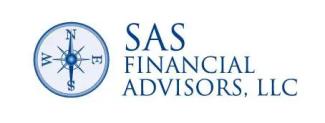Newsletter 03/26/2020
Here we are at week 3 and email update number 3 from SAS Advisors, LLC. The Covid-19 situation is getting worse as predicted, life rhythm changing for all of us, daily challenges, thinking about going to supermarket or just going out or even worse for those of whom are uncomfortable with technology figuring out how to order groceries online. Congress has introduced a Bill to infuse $2 trillion into our economy. The stimulus is divided between public institutions like hospitals, small businesses, state and city government, individuals, unemployment insurance, and key industries. It has yet to pass both the Senate and House. Markets seem to be encouraged as they have been recovering some of their losses.
Actually, watching Andrew Cuomo talk about New York State and Netflix/Amazon/Hulu/HBO/Showtime/Starz are best for TV watching at the moment. Here is your reminder to keep the news watching to a minimum. The last two days have been record up days in the stock market in anticipation of a congressional stimulus. Talk of returning to life as normal on Easter? Can you imagine a visit to Disneyland in April? Hardly. Some thoughts and strategy going forward.
We have been purchasers of individual bonds forever and all clients own some. The bond market has experienced problems in both credit and liquidity due to recent market uncertainty, however as bond investments mature, they mature at face value, i.e., you get all your money back (in addition to the interest payments that were received on the bond during the time you owned it). This is to say, you get your money back regardless of whatever price drops have happened in the market. This is the value of owning individual bonds and holding them until they mature. By holding them to maturity (which we do) you retain the value of that investment therefore not capturing any losses on that investment.
During 2008-2012 the CA municipal tax-free bond yield exceeded the yield on comparable US Treasury bonds. This same anomaly has happened in the bond market again. The reason it is an anomaly is because CA municipal bonds are federal and state tax free and US treasury bonds are just state tax free. These anomalies eventually revert to normal but during the anomaly there is opportunity to purchase depending on your financial goals.
Our approach is incrementally opportunistic. This is a time to be cautious as well and clarify how long and for what purpose we are investing your funds. In other words, the strategy depends on the plan. Despite the chaos and disruption in markets everywhere this is primarily a public health issue. It is likely to get worse before it gets better. Until we have confidence around the strategy for stabilizing the public health crisis, it will not be possible to predict how the economy will rebound. It is not clear whether this will be a V shaped or U-shaped recovery and it won’t be clear for at least a few weeks.
Assuming Congress passes the economic safety-net legislation this should help markets temporarily. This bill is not really a stimulus: it is an effort to staunch the economic hemorrhage. Massive legislation like this will undoubtedly lead to unintended consequences, similar to TARP for 2009. Once the bleeding stops what could we be looking at? Government debt beyond our imagination? Increasing interest rates? No one really knows. In could involve a return of the manufacture of essential products and services back to the US with its attendant increased cost. It could involve higher taxes to pay for all of this. How certain of this outcome am I? Well this is just my best educated guess. However, I am not the only advisor seeing this possibility. How do I know? One security that hedges against inflation is Treasury Inflation Protection Bonds, “TIPS”. The price of the securities represented in this asset class have been increasing year to date. The most popular security TIP is up 1.32% this year so far. Gold is up as well but the long-term return of Gold is terrible, and it pays no dividend.
There are opportunities and lessons to learn from upheavals such as we are experiencing now. Stocks certainly have moved closer to historic fair value but that is based on current earnings. We know earnings will decline as GDP growth disappears and becomes negative, but we neither know the depth of the earnings decline nor what recovery will look like. The phrase is “cautiously opportunistic.” Here is an article from Jason Zweig from the WSJ this weekend that is helpful to understand our behavior and memory around traumatic events. But be prepared for some Post Traumatic Stress even when this is over.
As your advisors, we are here to help you continue in your pursuit of your financial and life goals and to give you increased confidence in your decision making always.
Ira
Article Links:
WSJ.com
JasonZweig.com
"The Panic of 2020? Oh, I Made a Ton of Money—and So Did You
Hindsight bias suggests that one day you’ll look back on all of this and... lie
By
Jason Zweig
Updated March 20, 2020 11:52 am ET
It’s springtime in the year 2030. You’re looking back at the crash of 2020, the devastation it dealt your portfolio and how you behaved as an investor.
What will you say?
If human nature is any guide—and, let’s face it, it is—your accounts of what happened will begin with such words and phrases as “Clearly…” or “It was obvious to me that…” or “Everybody knew that…”
In the future, your memory of the crash of 2020 won’t be a recollection. It will be a reconstruction, built partly from what is happening now and largely from what you learn later about what hasn’t happened yet.
I’m describing hindsight bias—the belief, after something happens, that we foresaw that it would occur.
That intuition keeps you from learning from mistakes, leads you to pay too much attention to unreliable forecasts and makes you mismeasure your tolerance for risk.
Fortunately, you can work around it.
Some commentators have argued that the coronavirus panic is nothing like the financial crisis of 2008 and 2009 because, unlike today, policy makers knew exactly what they were doing back then. That’s nonsense. Monetary and political leaders navigated that time not with foresight but with a jury-rigged blend of bluffing, analysis, tinkering, bickering, guesswork and luck.
Don’t let yourself be fooled into believing it’s unusual that nobody knows what’s going on right now. The past makes sense only in retrospect, after our minds burnish it to our liking. The present almost always defies our efforts to make sense of it.
In a classic experiment in 1972, researchers asked people to estimate the likelihood that various positive and negative outcomes might result from President Richard Nixon’s upcoming trips to China and Russia that year. We now call those visits “historic” because they thawed decades of hostility between the U.S. and the communist powers. In advance, no one knew whether the trips would accomplish anything.
About two weeks after Nixon’s visits, 71% of people recalled putting better odds on his success than they had at the time. Four months on, 81% remembered being more sure Nixon would succeed than they had said beforehand.
In short, learning what did happen impedes you from retrieving what you thought would happen.
Children as young as the age of three, asked what’s in a candy box, will say “candy.” Show them it contains pencils instead, then ask what they had thought would be inside—they will say “pencils.”
One week after the verdict in the 1995 murder trial of O.J. Simpson, 58% of people in a study recalled predicting he would be found not guilty; a year afterward, 68% remembered saying he would be acquitted. In fact, only 48% of them had said so before the verdict. Likewise, people distorted the odds they’d placed in advance that President Bill Clinton would be convicted in his 1999 impeachment trial.
In 2002, psychologists asked nearly 1,000 Americans to recall how likely they had expected terrorism-related incidents—and other risky events—to be in the immediate aftermath of Sept. 11, 2001. After a year in which fears had mostly subsided, they remembered being much less pessimistic than they had been at the time.
So that pundit predicting doom on financial television right now will get to say “I told you so” if the economy collapses. But if things improve, he—and his audience—will end up remembering his forecast as sunnier than it was.
“We’re biased to see ourselves in a positive light,” says Deborah Small, a psychologist at the Wharton School at the University of Pennsylvania. “We want to believe that we’re rational and smart. We’ll recall our past actions as more sensible than they were. We also give ourselves too much credit and don’t remember our mistakes as well as we do our successes.”
Sure enough, investors looking back on their own decisions often recall more gains and fewer losses than they racked up in reality.
To combat hindsight bias, tune out economic and financial forecasters who don’t share complete track records of their predictions. (If that leaves you with no one to listen to, well, them’s the breaks.)
Next, track your own forecasts. If, as I have often urged, you kept an investment diary during the financial crisis, go back and read it. How accurately did you predict how far stocks would drop and how long they would take to recover? If you were wrong about the past, how likely are you to be right about the present and the future?
Finally, take what psychologist Daniel Kahneman calls “the outside view.” Rather than try to figure out exactly how bad this crisis will be, look at the broader set of historical precedents.
Since 1929, the S&P 500 has suffered 14 bear markets, defined by S&P Dow Jones Indices as losses of at least 20%. The shortest and shallowest was the 20% drop that lasted less than three months in late 1990. The deepest was the 86.2% collapse from September 1929 to June 1932; the longest, the 60% plunge from March 1937 to April 1942. On average, bear markets lasted 19 months and dealt a 39% loss.
Staring the past honestly in the face, rather than letting your memory play tricks on you, is the best way to form realistic expectations of the future.
Questions/Comments? Write to Jason Zweig at intelligentinvestor@wsj.com"

